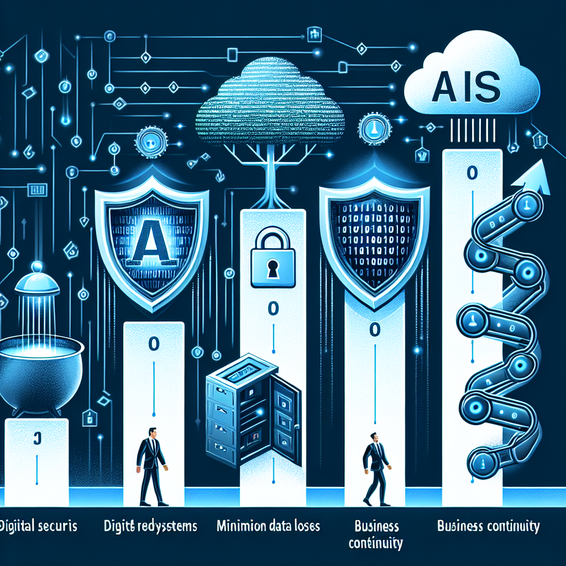AI is redefining the way organizations detect, prevent, and respond to cyberattacks, making it an essential layer for modern business security. But with every advance comes new risks—data loss, evolving tactics from attackers, and the need for continuity plans that keep pace with technology. Let’s dive into how you can stay several steps ahead in an AI-driven threat landscape.
Why AI Security Matters Now
Cyberattacks are becoming more sophisticated, leveraging automation, social engineering, and zero-day exploits that outpace traditional security tools. AI helps you spot unusual behavior, anticipate threats faster, and automate responses to contain breaches quickly. However, attackers also use AI to probe for weaknesses and develop new malware. Security teams must fight fire with fire by integrating AI into their defense stack. For a broad look at proactive digital protection, see our post on cyberattack strategies.
Key Lessons and Industry Impact
- Data Loss is Expensive – When sensitive data leaks, it’s more than just an IT problem—it erodes customer trust, triggers regulatory scrutiny, and can put business operations on hold. Proactive AI-driven monitoring helps catch anomalies before leaks turn catastrophic.
- IT Teams Need to Upskill – The shift toward AI security requires a stronger cross-section between analytics, threat intelligence, and automation. In a skills-shortage market, continuous learning is your edge.
- Continuity is Non-Negotiable – AI supports business continuity not just by defending against attacks, but by ensuring real-time recovery through smarter backup and response routines. Explore more on disaster recovery strategies.
- Reputation is On the Line – The fallout from a breach can extend for years—even a single incident can dominate news cycles and permanently alter consumer behavior.
Actions IT Professionals Should Take
If you’re responsible for your organization’s security posture, now’s the time to:
- Deploy Multi-Layered AI Security – Use solutions that integrate behavioral analytics, endpoint protection, and real-time monitoring. Evaluate products like CrowdStrike or SentinelOne for holistic AI-powered cyber defense.
- Invest in Incident Response Automation – Automated playbooks can reduce response time and limit human error during a breach.
- Continuously Monitor and Test – Regular penetration testing, red-teaming, and simulated attacks reveal where AI security shines—and where it needs reinforcement. Reference our tips on improving observability.
- Ensure Strong Authentication and Encryption – Don’t just rely on passwords; employ passkeys, strong encryption at rest and in transit, and enable 2FA everywhere security counts.
Want to minimize risk and stretch your IT budget? Open-source tooling, cloud-native controls, and integrating AI solutions that scale as you grow are smart moves. Prioritize platforms that provide granular visibility and can adapt to shifting compliance standards.
Conclusion: Staying Ahead of the Curve
The game has changed. AI isn’t just a future trend—it’s the new normal in cybersecurity. The organizations that thrive will be those who treat security as an evolving discipline and make AI an everyday partner in both risk mitigation and resilience. Rethink your approach, invest in skill-building, and always keep one eye on what’s next—because your defenses should evolve as fast as the threats you face. Ready to take action? Review our related articles on digital transformation and keep building a more secure tomorrow.
